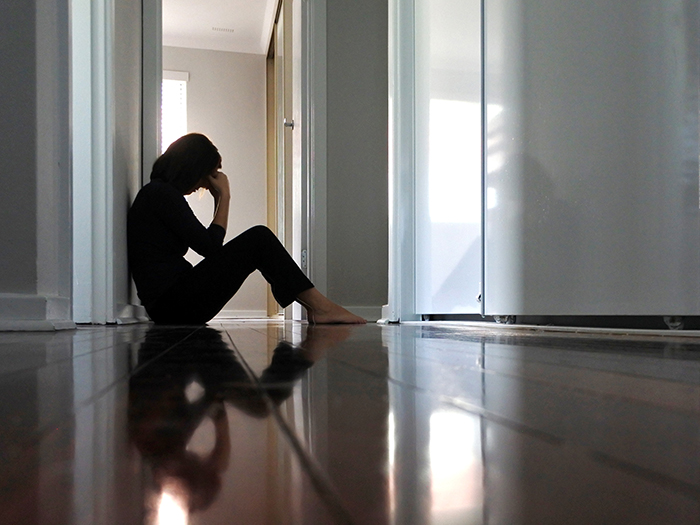From burnout to pandemic stress, employees are coping with a variety of new mental health challenges.By: Courtney DuChene | December 8, 2020Topics: COVID-19 | Employment Practices | Workers’ Comp | Workers’ Comp Forum

Like many parents, Andrew Savikas, chief strategy officer at the business publishing company getAbstract, has realized the workload the school system lifts off of parents.
Schools provide education, meals and childcare. With online learning, those responsibilities —and the stress that comes with them — are falling back on parents.Advertisement
“We’ve talked about the challenges with kids and I actually know that first hand. One of the realizations from the transition from in person learning to remote learning is realizing that the school system does a lot of things besides just teach children,” Savikas said.
“It’s really a bundle of services. It’s the education. It’s childcare. For a lot of kids, it’s meals. It’s also socialization enrichment.”
These circumstances can sound overwhelming, but for many workers they’re the new normal. As it has with many things, the COVID-19 pandemic has upended workplace mental health programs.
Employees are facing new stressors stemming from the recession, social isolation and additional caretaker responsibilities and many office mental programs just aren’t designed to handle them yet.
“Employees have been suffering from significant mental health declines since the start of the pandemic. Economic uncertainty, personal or family illness, lockdowns and remote work, new ways of working and collaborating, and balancing work and childcare are just some of the new obstacles that today’s workers are navigating,” said Ronni Zehavi, CEO of people management platform Hibob.
Though the pandemic will end, stress and anxiety stemming from remote-work may continue as many offices plan to continue work-from-home arrangements post-pandemic.
In order to adapt to the mental health needs of remote-workforces employers may have to adapt in-person offerings, like Employee Assistance Programs (EAP) to virtual programming and resources.
The Unique Mental Health Challenges of a Pandemic

Terri Rhodes, CEO, DMEC
Since the pandemic began, offices have turned to remote-work. Gone are the days when workers could socialize in break rooms or as they drank coffee in the mornings. Now, many people work from their homes and barely have any non-virtual communication with their co-workers.
Employees, in many cases, are also deprived of their social lives outside of the office. Stay-at-home orders have kept people from gathering with their friends and relatives. All of these factors could contribute increased feelings of isolation and depression.
“With lockdowns and social distancing guidelines, people are not able to socialize the way they used to, which could add to feelings of loneliness,” Zehavi said.
A survey from Hibob found that since the pandemic started employee satisfaction dropped 27% and mental health and wellbeing dropped 33%. Another study from getAbsract found that in September 89% of workers felt isolated, distracted or disconnected, with the number of employees feeling isolated increasing 26% since April.
On top of that, getAbstract’s study found 37% of employees reported feeling isolated and concerned about their job security, opportunities for promotions and job performance.
Anxiety over financial stability can play a large role in an employee’s overall mental health. Eleven percent of employees reported a change in mental health due to changes to their financial situation, according to Hibob’s survey.
Childcare Adds Stress for Many
These stressors are compounded by childcare and other caretaker responsibilities, which have increased for many since the pandemic began.
Workers may have to take time off to care for a sick partner or family member or they may be facing additional childcare and homeschooling responsibilities since many schools are turning to virtual or hybrid models to curb the spread of COVID-19.
Childcare responsibilities can be particularly distracting since children often need attention during the day. For many, there will be little relief from additional childcare responsibilities until the pandemic ends and schools can re-open.
The burdens of additional child care and homeschooling responsibilities tend to disproportionately fall on women, causing many to speculate that COVID-19 might result in a workforce “she-cession.”
Hibob’s survey found that 25% of women reported a decrease in job satisfaction since the pandemic began compared to 15% of men reporting this and that women’s mental health was about 10% worse than men’s.
“There’s quite a bit being written about it in the media right now, and the impact on women — not all, but mostly women — that have taken on most of the responsibilities around, childcare and home schooling,” said DMEC’s chief executive officer Terri L. Rhodes, CLMS, CCMP, CPDM, MBA.
“There are employers who aren’t so flexible or can’t be flexible and this is a huge stress to women, in particular.”
Children, roommates and partners can also make it difficult for people to seek out tele-mental health services because of the lack of privacy.
“Conducting telemental health consultations in a home setting can have its challenges for both patients and provider who may have distractions or struggle to find a private place to hold the call, especially if family members are around. Patients may also lack privacy with roommates, children, or even abusive partners in the vicinity who you don’t want to overhear your discussion,” said Kyle Laudadio, underwriter, private enterprise at Beazley.
Remote-Work Poses New Mental Health Challenges
The pandemic and the stressors will someday come to an end, but the shift to remote-work will likely continue well into the future.
“Companies are right to be assuming this is going to be a long-term thing and they need to start doing things to equip their workforce to adjust and adapt to this changing environment,” Savikas said.Advertisement
Remote-work is popular among workers because it offers increased flexibility and eliminates commute times. getAbstract’s September survey found that 57% of workers want to continue working from home after the pandemic ends. This number is up nine percent from their April survey.
“Remote and hybrid workforces are the way of the future, and many employees actually prefer or enjoy the ability to work from home, and want flexibility in the long-term,” Zehavi said.
An increased amount of employees working remotely post-pandemic means that workplaces will have to reconsider their mental health offerings. Most workplace mental health offerings center on in-person programming or EPAs, which don’t always translate easily to remote-work environments.
“You see people really having a hard time closing the laptop or disengaging from work and having that separation from working life.”—Andrew Savikas, chief strategy officer, getAbstract
Additionally, employees who work-from-home tend to work longer hours, putting them at greater risk of burnout. Since the pandemic began, workers in the U.S. are working an extra 32 minutes per day, according to reporting from The Economist.
“You see people really having a hard time closing the laptop or disengaging from work and having that separation from working life,” Savikas said.
During the pandemic, this has been compounded by employee’s reluctance to take time off. Travel restrictions have caused people to postpone or cancel vacation plans entirely, leaving many employees without needed breaks.
“Many people have been reluctant to take their PTO during the pandemic, but without time off, burnout is likely. Make sure employees are taking their earned vacation days and unplugging while away,” Zehavi said.
Telehealth and Digital Programs Lead as a Resource
To address these issues, employers are shifting their mental health offerings to virtual options. Everything from virtual therapy services to meditation apps can help people virtually cope with stress.
These new services are aided by the fact that telehealth services have gotten easier to use and they offer higher quality services. 
Kyle Laudadio, underwriter, Private Enterprise, Beazley
“Virtual Care platforms have improved dramatically in recent years. They have become more user-friendly and intuitive, and with better internet connections, audio and video have become more dependable, which will remove a barrier to take-up of virtual services, and encourage more users to see them as a viable alternative to in-person treatment,” Laudadio said.
To help facilitate digital mental health resources, a lot of states and regulatory bodies have loosened their regulations surrounding virtual psychiatric services. The FDA has even issued new guidance calling for states to provide policies that allow digital mental health services to expand in order to help prevent the spread of COVID-19.
These new technologies aren’t without their risks, however. Services like mental health and mindfulness apps aren’t catered to an employee’s individualized needs. When it comes to virtual, one-on-one therapy, providers can’t intervene as quickly if someone threatens either their own safety or that of others.
“While some telemental health services arguably work more effectively online than some forms of healthcare, it does bring additional risks to consider,” Laudadio said.
“In a scenario, for example, where a patient is showing signs that they might harm themselves or others, a trained expert would aim to calm the situation and take decisive action but this can be much harder to manage remotely. If the patient were to abruptly end the call for the session, you may not be able to reconnect with them and won’t necessarily know where they are, so it is harder to provide immediate care or to refer to appropriate authorities to intervene if necessary.”
Despite these risks, digital mental health offerings are becoming more common and, for remote employees they can be a good way to supplement EAPs.
Digital mental health offerings don’t need to be as formalized as encouraging employees to seek out an EPA or download an app, however. Setting up a channel in Teams of Slack where employees can chat and one where they can access mental health resources can really help struggling employees find the resources they need.
“At DMEC, we’ve set up a virtual water cooler to connect with each other and we set up our wellness plan activities on Teams. So we’ve found ways to connect our staff and also, you know, just increase visibility with each other,” Rhodes said.
Above all, Rhodes and other experts emphasized offering employees mental health resources that fit into their schedules and don’t cause additional stress.
Multi-hour mental health webinars often aren’t helpful because they can take away from time that workers might use to accomplish other job-related tasks. Instead, offer resources that employees can seek out as they need them or those that take only 10-15 minutes. “Don’t have hour long meetings. Think about the time you need to convey the message, 15, 20, 30 minutes is good,” Rhodes said.
Even just coordinating a fun, virtual activity like a happy hour or an after-hours employee game night can go a long way in helping employees relax and connect with company culture.
“Coordinate fun activities for your team that can get their minds off work. Whether it’s a virtual cooking class, fitness class, or happy hour, setting up time for your teams to connect about topics other than work can be helpful as well,” Zehavi added. &Courtney DuChene is a staff writer at Risk & Insurance. She can be reached at duchene@theinstitutes.org.
